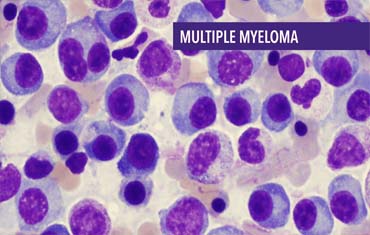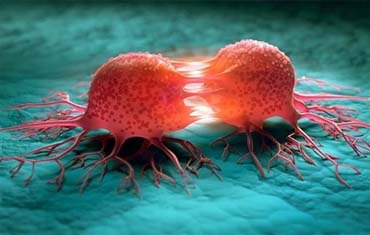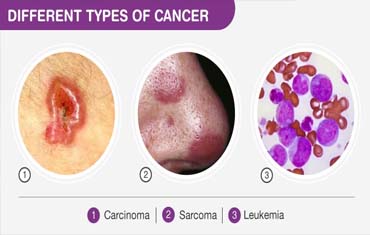• Sarcoma

Listen to pronunciation. (sar-KOH-muh) A type of cancer that begins in bone or in the soft tissues of the body, including cartilage, fat, muscle, blood vessels, fibrous tissue, or other connective or supportive tissue. Different types of sarcoma are based on where the cancer forms.
• Oral Cancer

Oral cancer is cancer that develops in the tissues of the mouth or throat. It belongs to a larger group of cancers called head and neck cancers. Most develop in the squamous cells found in your mouth, tongue, and lips.
• Prostate Cancer

A man's prostate produces the seminal fluid that nourishes and transports sperm. Symptoms include difficulty with urination, but sometimes there are no symptoms at all. Some types of prostate cancer grow slowly. In some of these cases, monitoring is recommended. Other types are aggressive and require radiation, surgery, hormone therapy, chemotherapy or other treatments.
• Lung Cancer

Two major types of lung cancer are non-small cell lung cancer and small cell lung cancer. Causes of lung cancer include smoking, second-hand smoke, exposure to certain toxins and family history. Symptoms include a cough (often with blood), chest pain, wheezing and weight loss. These symptoms often don't appear until the cancer is advanced. Treatments vary but may include surgery, chemotherapy, radiation therapy, targeted drug therapy and immunotherapy.
• Colon Cancer

The colon is the final part of the digestive tract. Colon cancer typically affects older adults, though it can happen at any age. It usually begins as small, noncancerous (benign) clumps of cells called polyps that form on the inside of the colon. Over time some of these polyps can become colon cancers.
• Leukemia

Leukemia is a broad term for cancers of the blood cells. The type of leukemia depends on the type of blood cell that becomes cancer and whether it grows quickly or slowly. Leukemia occurs most often in adults older than 55, but it is also the most common cancer in children younger than 15.
• Lymphoma

Lymphoma is a broad term for cancer that begins in cells of the lymph system. The two main types are Hodgkin lymphoma and non-Hodgkin lymphoma (NHL). Hodgkin lymphoma can often be cured. The prognosis of NHL depends on the specific type.
• Multiple Myeloma

Multiple myeloma is a cancer that forms in a type of white blood cell called a plasma cell. Healthy plasma cells help you fight infections by making antibodies that recognize and attack germs. In multiple myeloma, cancerous plasma cells accumulate in the bone marrow and crowd out healthy blood cells.
• Melanoma

Melanoma is a form of skin cancer that begins in the cells (melanocytes) that control the pigment in your skin. This illustration shows melanoma cells extending from the surface of the skin into the deeper skin layers.
• Brain and Spinal Cord Tumors

A childhood brain or spinal cord tumor is a disease in which abnormal cells form in the tissues of the brain or spinal cord. The brain controls many important body functions. The spinal cord connects the brain with nerves in most parts of the body. Brain and spinal cord tumors are a common type of childhood cancer.
• All type Cancer

There are more than 100 types of cancer, and some are more common than others, depending on things like your age, gender, and racial or ethnic group. (For example, prostate cancer only affects men, and breast cancer is far more likely in women.)
